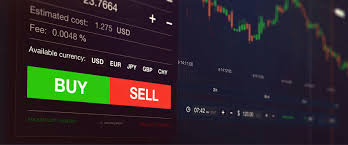
In the fast-paced world of forex trading, having a solid trading system is paramount to achieving consistent success. A well-structured forex trading system Trading Broker Global trading system not only guides traders through the complexities of the market but also helps manage risk effectively. This article delves into the various components of a robust forex trading system, including types of systems, key indicators, and essential strategies.
Understanding Forex Trading Systems
Forex trading systems are strategies or methodologies used by traders to enter and exit trades in the foreign exchange market. A well-defined trading system comprises several critical components:
- Market Analysis: This can be technical analysis, fundamental analysis, or a combination of both.
- Entry and Exit Rules: Clearly defined rules that dictate when to enter and exit trades.
- Risk Management: Strategies to minimize losses, such as setting stop-loss and take-profit levels.
- Trading Psychology: Understanding the psychological factors that affect trading decisions.
The Importance of a Trading System
A trading system provides structure to your trading process. Without one, traders may find themselves subject to emotions, leading to impulsive decisions. A well-planned system dictates your next actions based on predefined rules, which can help mitigate human error and enhance performance.
Types of Forex Trading Systems

There are various types of forex trading systems, ranging from automated systems to manual trading systems. Each has its unique advantages and may suit different trading styles:
- Manual Trading Systems: These require traders to analyze the market themselves and make decisions based on their own judgment and analysis.
- Automated Trading Systems: Also known as trading robots, these systems automatically execute trades based on programmed criteria.
- Swing Trading Systems: Focused on capturing smaller price moves over a few days to weeks.
- Scalping Systems: Aimed at making numerous trades over short time frames, usually seconds to minutes.
- Position Trading Systems: Involves holding trades for an extended period, often weeks to months, based on long-term analysis.
Key Indicators for Forex Trading Systems
Indicators play a crucial role in the development and functionality of forex trading systems. Here are some of the commonly used indicators:
- Moving Averages: Help identify trends by smoothing out price data.
- Relative Strength Index (RSI): Measures the speed and change of price movements to identify overbought or oversold conditions.
- Bollinger Bands: Show volatility and potential price levels by creating bands around a moving average.
- MACD (Moving Average Convergence Divergence): Helps identify momentum and trend changes through the relationship between two moving averages.
- Fibonacci Retracement: Used to identify potential reversal levels in the market.
Risk Management in Forex Trading Systems
One of the most important aspects of any trading system is risk management. Effective risk management strategies help traders protect their capital and ensure long-term success. Some common risk management techniques include:
- Position Sizing: Determining how much capital to allocate to each trade based on risk tolerance.
- Stop-Loss Orders: Setting predefined levels at which to exit a losing trade to limit losses.
- Take-Profit Orders: Identifying ideal levels to exit a profitable trade to secure gains before the market reverses.
- Diversification: Spreading trading capital across different currency pairs, reducing exposure to any single currency.
Developing Your Forex Trading System
Creating a personalized forex trading system involves several steps. Here are some key considerations to keep in mind:
- Define Your Goals: Determine what you want to achieve with your trading, e.g., generating additional income or saving for retirement.
- Choose a Trading Style: Decide if you want to be a scalper, day trader, swing trader, or position trader based on your schedule and risk tolerance.
- Conduct Market Analysis: Develop your analysis approach, whether it is technical, fundamental, or a combination of both.
- Select Indicators: Choose indicators that complement your approach and suit your trading style.
- Test Your System: Use a demo account to backtest and validate your system’s effectiveness without risking real capital.
- Adjust and Optimize: Fine-tune your trading system based on results, continuing to learn and adapt as market conditions change.
The Psychological Aspect of Trading
Psychological factors can significantly impact a trader’s performance. Developing and adhering to a trading system requires discipline and emotional control. Common psychological challenges include:
- Fear: The fear of losing money can lead to hesitance and missed opportunities.
- Greed: The desire for more profits can cause traders to hold their positions too long.
- Overconfidence: This may lead to taking excessive risks without a proper strategy.
- Frustration: Losing streaks can lead to emotional decisions rather than sticking to the trading plan.
Conclusion
In summary, a well-defined forex trading system is a vital component of successful trading. By understanding different trading styles, utilizing effective indicators, and implementing solid risk management techniques, traders can create a system tailored to their needs and goals. Additionally, recognizing the psychological aspects of trading helps traders maintain discipline and make rational decisions in the fluctuating forex market.
As you explore developing or refining your trading system, remember that ongoing education and practice are essential to your trading journey. Whether you are a novice or an experienced trader, having a robust forex trading system can significantly influence your success in the ever-evolving forex market.



